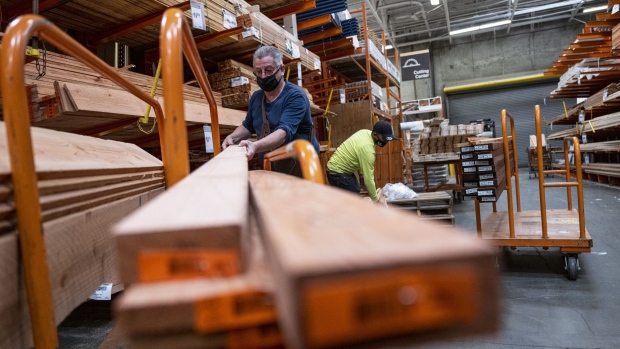Apr 27, 2021
Homebuilders' pain to spell record earnings for lumber producers
, Bloomberg News

When Kris Taylor set out to build a lake house last October, he budgeted US$40,000 for lumber. But a pandemic-fueled homebuilding frenzy that’s catapulted lumber prices into uncharted territory more than doubled his expected costs.
Taylor ultimately moved forward, joining a chorus of homebuilders fanning the flames of lumber’s remarkable rally. Since June, lumber futures have more than tripled to a record US$1,326 per 1,000 board feet.
That’s expected to translate into record first-quarter earnings for wood suppliers, who begin reporting revenues this week. Some analysts expect second-quarter earnings will be even higher, with the number of U.S. single-family homes built in March jumping to the highest since 2006, and strong building applications indicating momentum for months to come.
Shares of West Fraser Timber Co. Ltd., the world’s biggest lumber producer, soared to record highs this month, as did those of Weyerhaeuser Co. and Interfor Corp.
“The market remains spectacular,” said Kevin Mason, managing director for ERA Forest Products Research. “Order files are extended well into May, inventories are exceedingly light, and there is no wave of incremental supply on the horizon.”
Mason expects lumber prices will moderate in the coming months, as summer holidays and oppressive heat reduces work hours at job sites in the U.S. South. But prices should remain above historical averages well into 2022.
“If 2020 was a mic-drop event, 2021 is setting up to be an even more impressive encore performance for the forest-product industry,” RBC Capital Markets said in an April recent report.
Record-high lumber prices are expected to mean “very strong free cash flow” for companies like West Fraser, Canfor Corp., and Interfor, RBC said.
For Taylor, an already “atrocious” lumber shopping experience was exacerbated by scant availability of oriented strand board, known as OSB, which is widely used as a plywood stand-in to make walls and floors. Instead, he had to buy more expensive wood panels.
Low inventories of OSB and other common wood products aren’t likely to reverse soon as pandemic-related labor disruptions make it difficult to ramp up production, according to CIBC Equity Research in an April 23 note in an April 23 note. But record profitability may incentivize more capacity, easing prices in 2022, the bank wrote.




